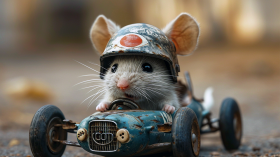After being moved from the Sacramento Zoo, a jaguar will now reside at the San Francisco Zoo & Gardens.
According to the zoo, this will be the first time in 24 years that a jaguar will live there.
Jaguar From Another Zoo
While a permanent habitat is being built, the jaguar will temporarily reside in a habitat next to the lion's house at the zoo.
According to the Sacramento Zoo, transfers are common since they are occasionally carried out for breeding purposes.
The male and female jaguars that were housed in the zoo previously had an unbreakable bond and could not have conceived. The male jaguar is housed in a larger, upgraded facility at the San Francisco Zoo.
Big news - there’s a new cat in town! Meet our new male jaguar! He is strikingly handsome w/ a muscular build & beautiful dark spots. We are honored to tell the story of this near threatened species and bring awareness to the challenges they face. Pix: Mike Owyang/Sacramento Zoo. pic.twitter.com/GnSpg4wXN4
— San Francisco Zoo & Gardens (@sfzoo) May 12, 2023
To provide the finest environment for its animals, the Sacramento Zoo stated it collaborates closely with neighboring zoos in Northern California.
Jaguars remain to be the iconic cat of the Americas, according to Tanya Peterson, CEO of the San Francisco Zoological Society, and the zoo is proud to tell the tale of this almost extinct species, which faces problems including habitat degradation, hunting, and poaching.
New Name in San Franciso Zoo
Jaguars previously spanned the entire continent of North and South America, and it is anticipated that his appearance will raise awareness among Zoo visitors about the need to save his species before it is too late.
After being born at the San Diego Zoo, the 11-year-old male jaguar moved to the Sacramento Zoo in 2012.
This summer, the jaguar will also have a new name, according to the San Francisco Zoo.
The zoo claimed that its jaguar shares the muscular physique of its species and possesses dark "rosettes" or spots that aid with its ability to blend into its natural habitat.
The Jaguar Species Survival Plan of the Association of Zoos & Aquariums recommended that the jaguar be relocated to the Sacramento Zoo.
Also Read: Rare Male Calico Unicorn Cat Found in Colorado Shelter is One in 3000
Jaguars of America
The zoo estimates that the jaguar, which weighs 125 pounds and is the third-largest big cat in the world after lions and tigers, is the biggest big cat in the Americas.
Jaguars developed in North America, spread to Central and South America, and subsequently lost the majority of their original northern range, according to the Center for Biological Diversity.
These big cats previously roamed as far north as Monterey Bay in California.
Small numbers of people still reside in the US-Mexico borderlands today.
They can be found in a variety of environments, including grasslands, lowland river valleys, swamps, mangroves, deep tropical forests, and desert scrubland.
They prefer locations close to rivers and streams.
Jaguars are being murdered as a result of overhunting for trophies and as an alternative for tiger bones in Asia, as well as because there are alleged conflicts with cattle.
According to Defenders, habitat loss is a significant issue for the northern population, and the US-Mexico border wall may obstruct jaguar migration paths.
According to Peterson, jaguars are hard to study and observe in the wild because of their enigmatic nature.
She hopes that every zoo visitor, regardless of age or experience level, will appreciate seeing and learning about this species up close, FOX40 reported.
Related Article: Lioness Zuri With Pseudo-mane Dies in Kansas Zoo Following Two Years of Kidney Failure
© 2024 NatureWorldNews.com All rights reserved. Do not reproduce without permission.





